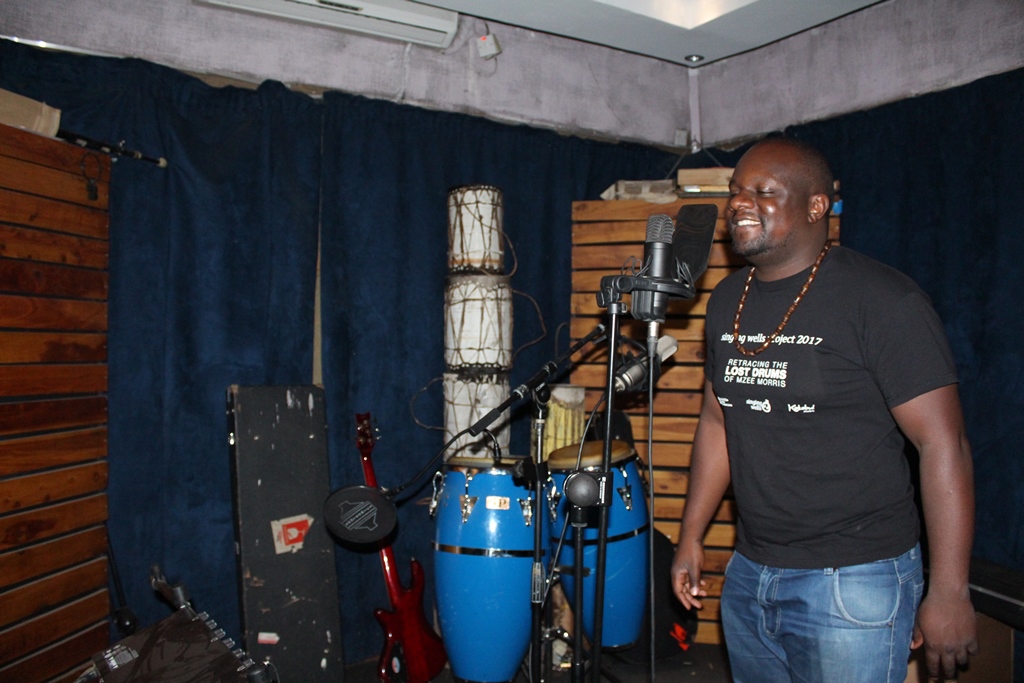Morning musings with Ketebul Music
Hivos East Africa is predominantly known in the region as being amongst the pioneering organisations that have supported the arts and film scene for close to 10 years. This support to the creative economy sector is part of our freedom of expression portfolio that seeks to bolster co-working spaces where change makers in physical and virtual spaces can innovate, develop their skills, exchange knowledge, receive mentorship and access audiences. One of the creative companies that has been dominating the music scene in Kenya is Ketebul Music, and they will be launching a publication dubbed Shades of Benga. Hivos East Africa’s Sally Akinyi sat down with the Founder of Ketebul Music, Tabu Osusa, to find out how they have become a major player in Kenya’s music industry.
SA: Tell me about Ketebul Music
TO: Ketebul Music started in 2007, but prior to that we had Ketebul Productions which began in 2004 at the GoDown Arts Center.
SA: Who do you identify yourself as (Ketebul Music)?
TO: We identify ourselves as music producers who do a lot of archiving and research to promote music with a Kenyan identity. Beyond Kenya, we have worked with international artists such as Omar Sosa, Gilberto Gil, and Mulatu Astatke amongst others.
SA: What genre of music do you produce?
TO: We focus on all genres but strongly on music that has an identity- culturally and socially. We have shifted from the current popular music that generally dominates the airwaves on mainstream media and gone back to the roots to music that blends our true Kenyan identity.
SA: What challenges currently dominate Kenya’s music scene?
TO: Kenya’s music scene is mostly infused with the Western culture where most artists want to be matched and compete with International artists. I would say what really ails us as a nation is that our music lacks the authenticity and uniqueness of our identity. As Ketebul Music, we are changing this dimension to promote Kenyan music with a strong cultural identity and promote who we are as a nation. We want to match Kenya with the likes of South Africa; the country is associated with ‘house’ music, having moved from Kwaito to now house music, which is modern hip hop with a strong cultural identity.
SA: What is Kenya’s music identity? I ask this because it seems like it exists but there’s a lack of ownership amongst our artists.
TO: Our identity from the Seventies has always been Benga. 80 per cent of the vast majority of contemporary artists drawn from all over Kenya from the likes of Ken wa Maria, the late Musa Juma play Benga amongst others play Benga. The confusion comes with upcoming artists who have been influenced by the Western culture. Their music is good as it’s hip and modern, but could be better with a fusion of identity. For instance we could have neo-soul with a Benga beat or hip hop with the same beat.
SA: How do you position yourselves us Ketebul Music in the industry?
TO: Ketebul produces authentic music which has a strong foundation on local cultures and sound. Within Nairobi we are differentiated as a company that plays what many may call traditional music in a sense. When it comes to the different artists we work with, we always fuse the different genres of music with a local-cultural sound. This is from hip hop to afro soul and neo-soul. In the Kenyan music industry, we have supported local artists such as Makadem, Olith Ratego, Sali Oyugi, and Winyo amongst others.
SA: What’s your relationship with Hivos East Africa?
TO: Hivos East Africa is one of the few partners who believed in us and showed willingness to walk with us in this journey. Their approach to freedom of expression in terms of incubating spaces where artists can bud and grow is similar to what we do at Ketebul Music. Our new book Shades of Benga that will be launched soon is courtesy of their support.
SA: Tell me more about Shades of Benga
TO: Shades of Benga is a collection of Kenyan music with the Benga beat from the early 70s. It profiles the stories behind popular music in Kenya and how this landscape has been changing.




